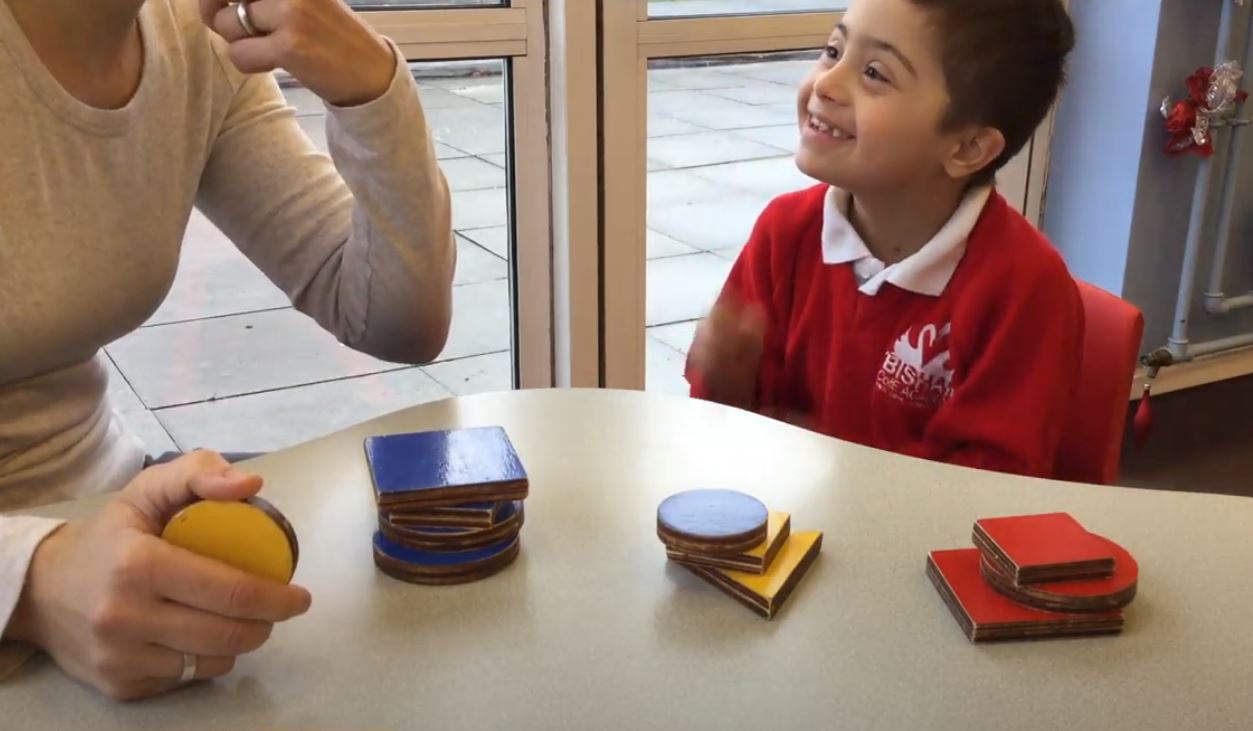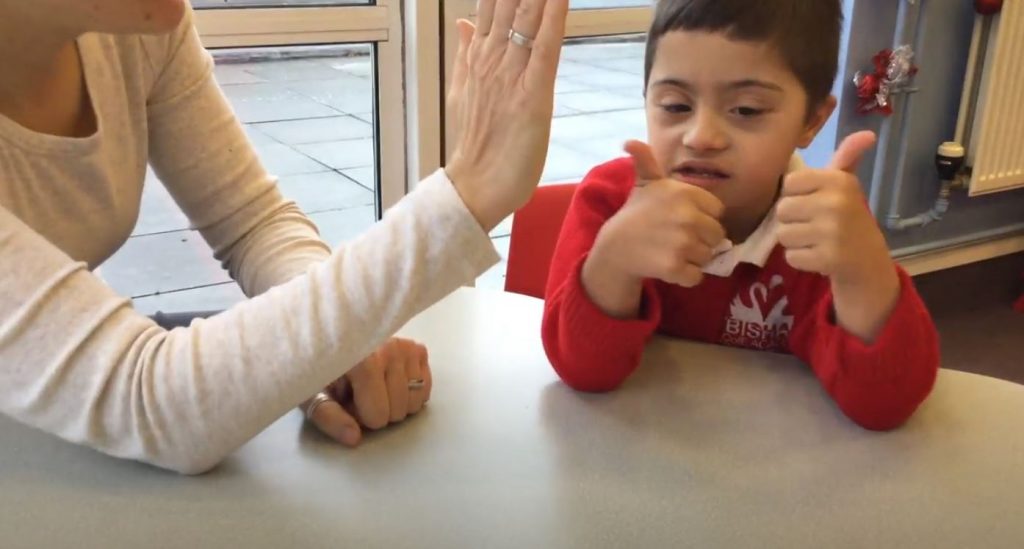If you are reading this, you may be an Educational, Clinical or Neuropsychologist. You may be a specialist teacher, a Speech and Language or Occupational Therapist. You might be accessing this website because you are a parent or have another role that makes you interested in finding out more about the area of dynamic assessment.
Much has been written about DA both from theoretical aspects and in addressing functional needs of users, so the following is intended only as a brief overview.
DA is a way of assessing the cognitive strengths and challenges of an examinee (child or adult – no age limits), by means of deliberate intervention, often referred to as mediation, within the assessment itself, so that the assessment becomes a dynamic learning experience, rather than an unaided test of the learner’s current performance. I will call the examinee the ‘learner’ henceforth, since we are not talking only about children.

The History of Dynamic Assessment
The history of DA goes back to the early part of the 20th century based on the concepts of Lev Vygotsky born in 1896 in Russia, the same year as his contemporary Piaget.
Vygotsky’s famous concept of the ZPD (1978), the Zone of Proximal (next) Development, threw out a challenge to psychologists already in the 1920’s. Psychologists, he wrote, should not only test children. Assessment should imitate nature. In daily interactions we don’t test children, we learn with them. If our goal is to help a child to learn better, we need to sample not only what the child can do now , unaided, that is their Zone of Actual (current) Development (ZOA) , but what may be in the process of development , emerging skills, which the child can only access with support at this point in time. The child has not yet reached the stage of independent mastery of the skill.
By placing a learning phase within the assessment, itself, we can see what is in the process of formation, emerging, but not yet crystallised in the repertoire of the learner, and what it takes by way of our mediation to help that person move forward.
Vygotsky’s work and his socio- cultural account of learning and cognitive development, was suppressed in Stalinist Russia for several decades after his early death (1934) and only appeared in western literature in the 1960’s. Thus, Piaget had the field of child cognitive development virtually to himself for several decades during which time generations of teachers were trained in “Discovery Learning “and in contrast to Vygotsky, taught to pursue a facilitating but largely non- interventionist role in the child’s journey from earliest years to mature models of abstract thinking.
With the exception of some early attempts at DA type tests by Andre Rey (1934), which were mainly ignored at the time, much of 20th century educational psychology was dominated by non -interventionist educational psychology tests such as Wechsler, Stanford – Binet and others.
Into this scenario in the late 1940’s and 1950’s, the Rumanian Psychologist, Reuven Feuerstein, began his own DA journey, through his work with child survivors of the Second World War and his subsequent work with immigrant children into Israel from North African countries. Feuerstein studied with Rey and regarded Piaget as his ‘master’. Unfamiliar at first with Vygotsky’s ideas, he developed his own theory of the cognitive potential of under- achievers through mediated learning, even in children or adolescents who appeared ‘retarded’ in their scores in unaided performance tests.
In the 1960’s Feuerstein and colleagues developed one of the first, if not the very first battery of DA tests which he called the LPAD (Learning Potential Assessment Device), emphasising potential development not (yet) independently accessible to the learner, but revealed in a dynamic learning interaction between the assessor and the learner. In this way, but for very different historical reasons, he proposed similar ideas to those of Vygotsky (Kozulin, 1998). Many psychologists in the UK who have taken some form of DA training have likely come across one or several of the tests used in the LPAD.
The field of DA has grown in many directions and diverse applications (Lidz and Elliott, 2000). Different DA models have been developed, some in which the mediation is structured, or semi-structured and some more flexible, responding more individually to the learner’s needs as they emerge in the rapport between assessor and learner. Computerised DA tests have also been developed. These are well described elsewhere. DA is applied to learners of different ages, a variety of challenges including sensory and learning disabilities, psychiatric challenges, language deficits and disorders, and in its most classic original application, to learners who are immigrants, asylum seekers, culturally and linguistically different , who for reasons of unfamiliarity, may underperform on standardised psychological tests.
How can one train in Dynamic Assessment?
The first thing to say is that there is no universally accepted model of DA training. No countries or international organisations have drawn up a DA curriculum that is accepted as the gold standard by all trainers and practitioners. Perhaps this is because DA is practiced in so many ways.
You may see advertised very brief, e.g. 1 day introductions to DA concepts; Specific DA tests developed by their individual authors, delivered in courses over a few days. Training that is more extensive, for example, the LPAD and my own training, which has been developed over 30 years of experience using DA , in an attempt to offer practitioners a practical , realistic, flexible package, enabling inclusion into every day practice. To find out about Dr Ruth Deutsch’s work in the field of dynamic assessment and cognitive education, please click here.
For further information about dynamic assessment training overseas, please contact Dr Ruth Deutsch at ruthdeutsch@coged.net or see more training courses at www.dynamic-assessment.dk/ .
Static vs. Dynamic Assessment – The Wrong Question?
At times one comes across a kind of ‘either or‘ debate about standardised assessment versus DA. I believe the question itself is mistaken. Each type of assessment tool whether a static test, DA, observation, consultation, etc. has its own contribution to make to our fuller understanding of the learner. My view of the place of DA for practitioner psychologists, is as a complementary or blended source of information about the learner which enriches the picture we gain and our ability to analyse, understand, define, plan and target the learner’s needs. We may need information about the learner’s ZOA + their ZPD. It is up to us as practitioners to choose the most useful tools for the job we are being asked to do and to reflect on and justify our goals and methods. I sometimes use standardised tests if I regard the test as relevant, adding value, culture fair and valid for that particular person, often in combination with DA in what I call a blended model of psychological testing where each source of information can enrich the overall findings.
So professional openness and flexibility is the rule of the day!
Challenges facing Dynamic Assessment
I am not going to elaborate here in detail on some of the theoretical challenges in the DA field. I will just mention topics like – learning potential – that much used phrase- what exactly is it and how can we measure it? What is cognitive modifiability -Feuerstein’s concept- how could one measure that? And what is the difference between LP and CM?
Another issue: Both for DA as well as static tests, there is no universally agreed comprehensive list of cognitive abilities. There are many models around. Neuropsychology tests, similarly, do not share an agreed list of cognitive abilities to be assessed, nor is there one agreed definition of executive functions.
So, whilst acknowledging the potential usefulness of DA approaches, there are challenges to aspects of validity and reliability, which are not fully resolved, Haywood and Lidz (2007), Deutsch, (2017). What should we be focussing on in DA? Academic research or functional applications of DA or both?
DA also faces some practical challenges: Access to training, support for implementation, ongoing mentoring in the workplace; Time constraints of practice; large case-loads; Sharing DA findings with teachers who do not share the same background as the DA practitioner in understanding cognitive developmental processes and how they manifest in curricular work (Deutsch and Reynolds, 2000). These challenges have been documented across several countries and contexts and are not unique to UK practitioner psychologists. The issues have not been resolved fully, although work is continuing to address these challenges in many places.
And is there an optimal time when DA should be taught? Is the most useful time for qualified practitioner psychologists and specialist therapists and teachers, as Continuous Professional Development, (CPD) or should we offer full DA training within our post-graduate psychology training courses?
The answer, perhaps, is all of the above and probably more!
“… Our hope [is] that we have contributed to making the case for dynamic assessment as a valuable member of the group of assessment procedures, one that warrants both the attention and the time of those who practice , those who train , and those who learn.” (Haywood and Lidz, 2007, p. 333.)
References
Das,J. P. Naglieri, J. A. and Kirby J. R. (1994b). Assessment of cognitive processes. The PASS theory of Intelligence. Allyn and Bacon, USA.
Deutsch, R.M. (2017) Reliability, Validity and Educational Use of the Cognitive Abilities Profile. PhD thesis. Division of Language and Communication Science, City University, London.
Deutsch, R. and Mohammed, M. (2008) The Cognitive Abilities Profile in O. Tang and A. Seng, (Eds). Cognitive modifiability in learning and assessment. Singapore: Cengage Learning. pp. 175-208.
Deutsch, R. and Reynolds, Y. (2000) The Use of Dynamic Assessment by educational psychologists in the UK. Educational Psychology in Practice. 16(3) pp. 311-331.
Feuerstein, R. Rand, Y. Haywood, C. Kyram, L. and Hoffman, M. (1995) Learning Potential Assessment Device Manual. ICELP Press, Jerusalem.
Guttman,L. (1959) Introduction to facet design and analysis. In Proceedings of the Fifteenth International Congress of Psychology, Brussels—1957. (pp. 130-132). Amsterdam.
Kozulin,A. (1998) Psychological Tools : A socio- cultural approach to education. Harvard University Press.
Korkman, M. Kirk, U. and Kemp, S. (2007) NEPSY II: A developmental neuropsychological assessment. Psychological Corporation.
Kaufman, A., Kaufman, N. (2004) KABC. Pearson.
Lidz, C. S. Applying Dynamic Assessment with school – age children. In Haywood, H. C. and Lidz, C.S. (2007). Dynamic Assessment in Practice: Clinical and Educational Applications pp. 176-204. Cambridge University Press
Lidz, C.S and Elliott, J.G. (2000) Dynamic assessment: Prevailing Models and Applications. Elsevier Science, New York.
Rey (1934) Rey, A. (1934). Un procédé pour évaluer l’éducabilité: Quelques applications en psychopathologie [A method for assessing educability: Some applications in psychopathology]. Archives de Psychologie, 24, 96
Vygotsky,L. S. (1978) Mind in Society. The Development of Higher Psychological Processes. Harvard University Press.
Luria, A. R. (1980) Higher cortical functions in man. Springer Science, New York.

